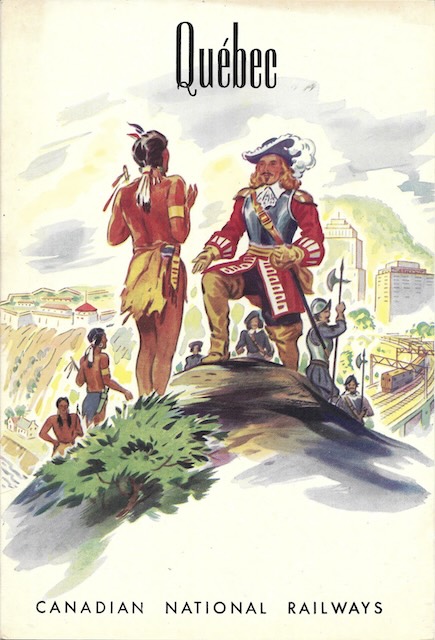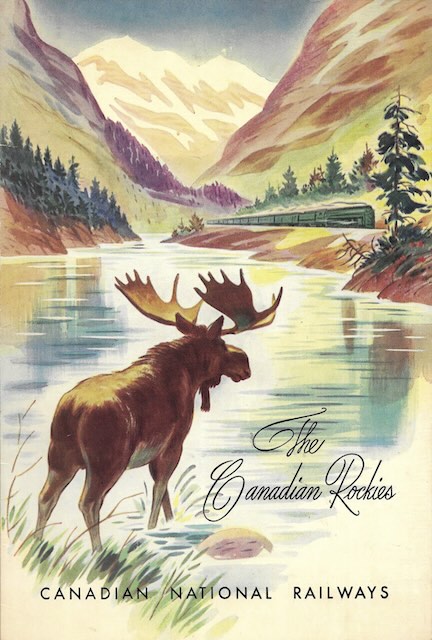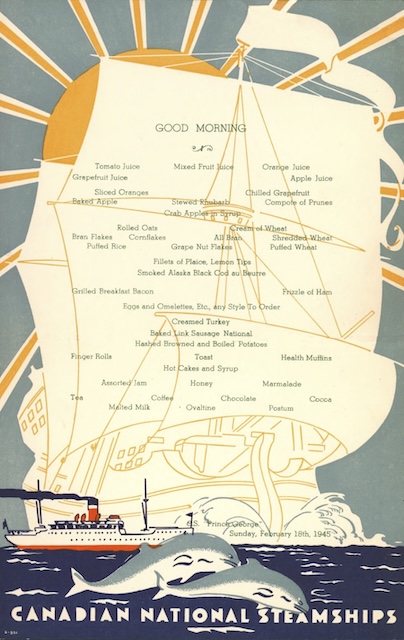This is part of the same menu series as yesterday’s Rocky Mountains menu. The CN menu series page also shows menu covers for British Columbia, western Canada, Ontario, and the Maritimes, so I speculated that there must be one in the series for Quebec. Thanks to Brian Leiteritz, now only the Maritimes menu is missing.
 Click image to download a 1.5-MB PDF of this menu.
Click image to download a 1.5-MB PDF of this menu.
The menu calls Quebec “the land of contrasts,” and it would have to be. As the largest of Canada’s provinces, it is almost as big as Alaska and well over twice as big as Texas. Unfortunately, the artist who painted these covers is unnamed. Inside is a standard a la carte menu dated 1948.









